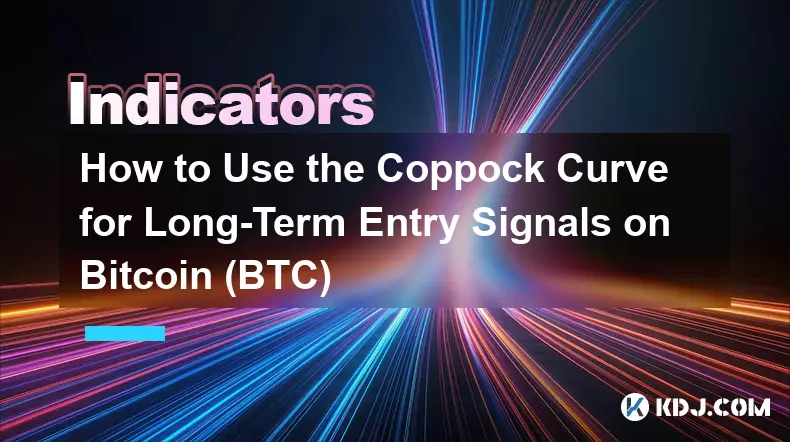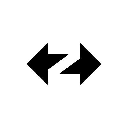-
 bitcoin
bitcoin $99177.955738 USD
-7.32% -
 ethereum
ethereum $3187.183061 USD
-12.38% -
 tether
tether $0.999809 USD
0.00% -
 xrp
xrp $2.117933 USD
-9.42% -
 bnb
bnb $906.710033 USD
-9.17% -
 solana
solana $149.367737 USD
-10.74% -
 usd-coin
usd-coin $0.999816 USD
0.01% -
 tron
tron $0.281498 USD
-0.38% -
 dogecoin
dogecoin $0.156292 USD
-8.00% -
 cardano
cardano $0.500744 USD
-10.19% -
 hyperliquid
hyperliquid $38.087358 USD
-4.58% -
 chainlink
chainlink $14.097831 USD
-8.54% -
 bitcoin-cash
bitcoin-cash $463.329916 USD
-9.22% -
 ethena-usde
ethena-usde $0.999078 USD
-0.01% -
 unus-sed-leo
unus-sed-leo $9.475862 USD
-0.79%
Reading crypto charts for beginners: understanding candlestick patterns.
Candlestick charts reveal crypto market sentiment through price patterns, helping traders spot reversals and trends using bodies, wicks, and key formations like hammers or engulfing candles.
Nov 05, 2025 at 02:55 am

Introduction to Candlestick Charts in Crypto Trading
1. Candlestick charts are one of the most widely used tools in cryptocurrency trading, offering visual insight into price movements over specific time intervals. Each candlestick represents four key data points: the opening price, closing price, highest price, and lowest price during that period. These elements form a compact yet powerful representation of market sentiment.
2. The body of the candlestick shows the range between the opening and closing prices. If the closing price is higher than the opening price, the body is typically colored green or white, indicating bullish momentum. Conversely, if the closing price is lower, the body appears red or black, signaling bearish pressure.
3. The thin lines above and below the body, known as wicks or shadows, illustrate the highest and lowest prices reached during the timeframe. Long upper wicks suggest resistance, where buyers pushed prices up but were eventually rejected. Long lower wicks indicate support, showing sellers drove prices down but demand returned to push them back up.
4. Traders rely on these formations to anticipate potential reversals or continuations in price trends. Unlike simple line charts, candlesticks provide nuanced details about volatility and trader psychology within each period—be it minutes, hours, or days.
5. Mastery of candlestick patterns begins with recognizing basic shapes and their implications. As traders gain experience, they combine these patterns with volume data, moving averages, and other technical indicators to refine their strategies and improve decision-making accuracy.
Common Bullish Candlestick Patterns
1. The hammer pattern appears after a downtrend and features a small body at the top of the candle with a long lower wick. This suggests that although sellers drove prices down, strong buying pressure reversed the trend by the close, hinting at a possible upward reversal.
2. The bullish engulfing pattern consists of two candles: a red candle followed by a larger green candle that completely engulfs the previous body. This shift indicates growing buyer dominance and often signals the start of an uptrend.
3. The morning star is a three-candle formation beginning with a long red candle, followed by a small-bodied candle (often a doji), and concluding with a strong green candle. It reflects a transition from selling pressure to renewed buying interest.
4. The piercing line pattern occurs when a green candle opens below the previous red candle’s low but closes more than halfway into the prior body. This partial recovery shows increasing buyer confidence amid a downtrend.
5. Traders watch for confirmation after these patterns emerge, such as follow-through price increases or rising trading volume, to validate the strength of the bullish signal before entering positions.
Recognizing Bearish Reversal Signals
1. The shooting star resembles the hammer but forms at the end of an uptrend. It has a small lower body and a long upper wick, indicating that buyers attempted to push prices higher but met strong resistance, resulting in a close near the open.
2. The evening star is a three-candle bearish reversal pattern starting with a long green candle, followed by a gap-up small body, and ending with a long red candle that closes deep into the first candle’s body. It highlights weakening momentum and potential trend exhaustion.
3. The bearish engulfing pattern features a green candle succeeded by a larger red candle that fully overlaps the prior body. This abrupt shift demonstrates seller control taking over from buyers, often triggering downward movement.
4. The dark cloud cover occurs when a red candle opens above the prior green candle’s high but closes below its midpoint. This penetration into bullish territory signals loss of upside momentum and growing bearish influence.
5. These patterns carry greater weight when appearing at key resistance levels or after extended rallies. Volume spikes during the formation increase the reliability of the bearish signal, alerting traders to consider exits or short entries.
Frequently Asked Questions
What does a doji candlestick indicate in crypto trading?A doji forms when the opening and closing prices are nearly equal, creating a cross-like shape. It reflects market indecision and often precedes trend reversals, especially when occurring after prolonged moves and accompanied by high volume.
How reliable are candlestick patterns in volatile crypto markets?While candlestick patterns offer valuable insights, their effectiveness can vary due to the extreme volatility of cryptocurrencies. Combining them with additional tools like RSI, MACD, or support/resistance levels improves accuracy and reduces false signals.
Can candlestick patterns be applied across different timeframes?Yes, these patterns appear on all chart timeframes—from one-minute charts to weekly views. However, signals on higher timeframes (such as 4-hour or daily) tend to carry more significance due to stronger consensus among market participants.
Why is volume important when analyzing candlestick patterns?Volume confirms the strength behind price movements. A bullish engulfing pattern on high volume suggests strong buying interest, while the same pattern on low volume may lack conviction and result in a failed breakout.
Disclaimer:info@kdj.com
The information provided is not trading advice. kdj.com does not assume any responsibility for any investments made based on the information provided in this article. Cryptocurrencies are highly volatile and it is highly recommended that you invest with caution after thorough research!
If you believe that the content used on this website infringes your copyright, please contact us immediately (info@kdj.com) and we will delete it promptly.
- Solana's Price Recovery: Harmonic Launch and Key Developments
- 2025-11-06 01:05:01
- Nebius Token Factory: Democratizing AI Deployment at Scale
- 2025-11-06 01:35:01
- Navigating the Crypto Landscape: Investment Opportunities in Web3, Bitcoin, and Ethereum
- 2025-11-06 00:55:01
- BlockDAG, Crypto Coins, and the 2025 Market: What's the Buzz?
- 2025-11-06 01:15:01
- Plasma (XPL) Price: Analyst Eyes Bullish Setup Amidst Market Uncertainty
- 2025-11-06 01:10:01
- Level Up Your Skills: Online Fire Training for Rural Firefighters
- 2025-11-06 01:40:01
Related knowledge

Using TradingView for crypto: essential tips and tools for chart analysis.
Nov 05,2025 at 04:30am
Mastering Chart Types on TradingView1. Selecting the right chart type is crucial for accurate crypto analysis. The default candlestick chart remains a...

Technical analysis for crypto: using RSI and MACD to find trading signals.
Nov 03,2025 at 03:18pm
Decentralized Exchanges Are Reshaping Trading Dynamics1. Decentralized exchanges (DEXs) have gained significant traction by eliminating intermediaries...

Reading crypto charts for beginners: understanding candlestick patterns.
Nov 05,2025 at 02:55am
Introduction to Candlestick Charts in Crypto Trading1. Candlestick charts are one of the most widely used tools in cryptocurrency trading, offering vi...

The Best Exponential Moving Average (EMA) Settings for Crypto Swing Trading
Oct 25,2025 at 04:55pm
The Best Exponential Moving Average (EMA) Settings for Crypto Swing TradingSwing trading in the cryptocurrency market relies heavily on identifying tr...

How to Use the Coppock Curve for Long-Term Entry Signals on Bitcoin (BTC)
Oct 31,2025 at 03:01pm
Understanding the Coppock Curve in Bitcoin Analysis1. The Coppock Curve is a momentum indicator originally designed for stock market indices but has f...

A Beginner's Guide to Finding Divergence with the MACD on the Solana (SOL) Chart
Oct 26,2025 at 12:36pm
Understanding MACD and Its Role in Solana Trading1. The Moving Average Convergence Divergence (MACD) is a momentum indicator widely used in cryptocurr...

Using TradingView for crypto: essential tips and tools for chart analysis.
Nov 05,2025 at 04:30am
Mastering Chart Types on TradingView1. Selecting the right chart type is crucial for accurate crypto analysis. The default candlestick chart remains a...

Technical analysis for crypto: using RSI and MACD to find trading signals.
Nov 03,2025 at 03:18pm
Decentralized Exchanges Are Reshaping Trading Dynamics1. Decentralized exchanges (DEXs) have gained significant traction by eliminating intermediaries...

Reading crypto charts for beginners: understanding candlestick patterns.
Nov 05,2025 at 02:55am
Introduction to Candlestick Charts in Crypto Trading1. Candlestick charts are one of the most widely used tools in cryptocurrency trading, offering vi...

The Best Exponential Moving Average (EMA) Settings for Crypto Swing Trading
Oct 25,2025 at 04:55pm
The Best Exponential Moving Average (EMA) Settings for Crypto Swing TradingSwing trading in the cryptocurrency market relies heavily on identifying tr...

How to Use the Coppock Curve for Long-Term Entry Signals on Bitcoin (BTC)
Oct 31,2025 at 03:01pm
Understanding the Coppock Curve in Bitcoin Analysis1. The Coppock Curve is a momentum indicator originally designed for stock market indices but has f...

A Beginner's Guide to Finding Divergence with the MACD on the Solana (SOL) Chart
Oct 26,2025 at 12:36pm
Understanding MACD and Its Role in Solana Trading1. The Moving Average Convergence Divergence (MACD) is a momentum indicator widely used in cryptocurr...
See all articles










































































